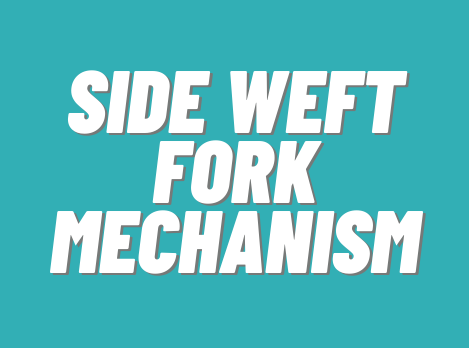

Side weft fork mechanism comes under the weft stop motion. It works on alternative picks.
Following are parts of side weft fork mechanism:
Weft fork cam: It moves grey hound tail lever and is made up of cast iron. Two positions of cams are identified they are change and dwell.
Grey hound tail lever: It is made up of cast iron and it supports weft fork hammer.
Weft fork hammer: The function of hammer is to catch the weft fork in the event of weft breakage. It is made up of cast iron material which is in S shape with a notch as shown in figure.

Weft fork:
It is made up of mild steel, the weft fork as shown in figure as 3 pranks. The function of weft fork is to feel the presence of weft.

Different types of weft forks are found depending on type of weft.
For example:
Light weight, thin weft forks are used for polyester and silk weaving. Thick weft forks are used for cotton weaving. Stainless steel weft forks are used for blends or cotton in automatic loom weaving.
Weft fork finger: Weft fork finger accommodates the weft fork and is made up of cast iron.
Tumbler lever: The weft fork finger is connected to tumbler lever which is made up of cast iron. Function of tumbler lever is to push the starting handle in the event of breakage.
When weft is present it is held in between grate and weft fork and thus the weft fork tail will be clear from the notch of the hammer. If weft is not there, the weft fork tail will not be lifted and thus will be caught by notch of the hammer. The further movement of the hammer causes the movement of weft fork finger, tumbler lever and thus the loom is stopped.
Following are settings for proper functioning:
Keep the crank at front center, set the distance between notch of hammer and tail of weft fork by 1/8 of an inch.
Keep the crank at front center, set the distance between weft fork finger and grate by 1/8 inch.

Comments